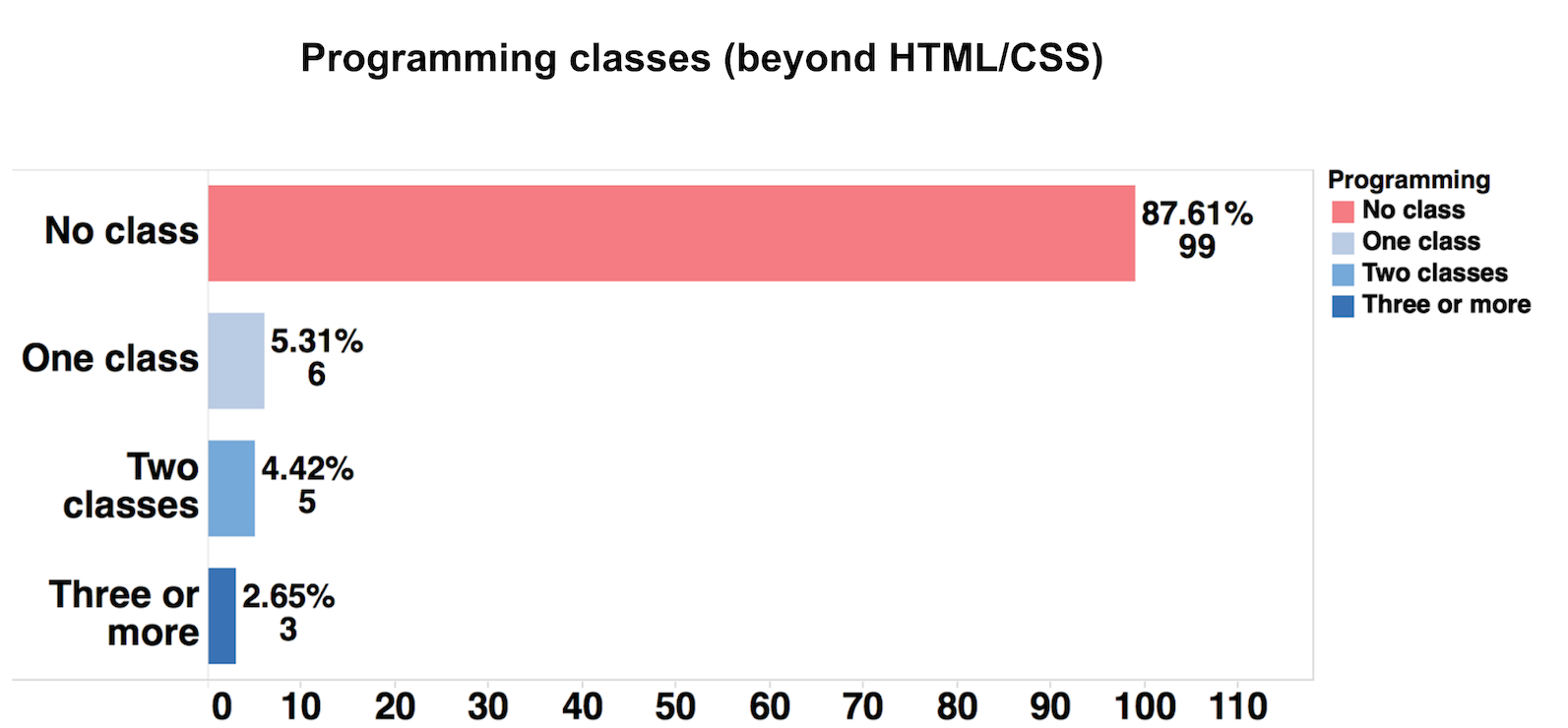
What’s missing from data journalism education and how we can improve the field
Photo by Mike Tigas on Flickr.
Joscelyn Jurich is a Ph.D. candidate in communications at Columbia University.
I spent the past several months interviewing data journalism professors, data journalists (many of whom teach data journalism as adjunct professors), journalism students and recent graduates across the country. The vast majority of them reported data journalism as a thriving and vital field. They described journalists’ and journalism students’ wide-ranging and innovative investigative projects, inspired data journalism curricula and community data journalism projects doing essential reporting. But they also reported a lack of advanced data journalism courses, a dearth of full-time professors able to teach at advanced levels, and a pressing need for both more critical approaches to data analysis and cross-departmental data courses.
Funded by Knight Foundation, our research team reviewed and analyzed the contemporary state of data journalism education in the U.S. through these in-depth interviews and by analyzing the curricula of about 113 journalism programs in the United States accredited by the Accrediting Council on Education in Journalism and Mass Communications (AEJMC). This number represents about a quarter of the programs in the country.
We recently published our results as a free report, “Teaching Data and Computational Journalism,” launched this month at the 2016 National Institute for Computer-Assisted Reporting conference. It includes sample curricula for a wide variety of computational and data journalism courses, along with a proposed model for a graduate lab-based degree in emerging media.
Our hope is that this report will be useful to educators, journalists and journalism students across the U.S. and internationally. It aims to illustrate the broad and robust potential for data journalism to investigate essential issues in the public interest and contribute to innovative forms of journalistic storytelling. Ultimately it argues that increased data literacy among journalists will produce journalists who can better report complex stories and who can approach data critically and with a deeply informed, in-depth analytical approach.

Findings from “Teaching Data and Computational Journalism” report
Here are some key findings from our report:
- 59 of the 113 programs we researched offer one or more data journalism courses encompassing a wide range of topics, from how to use spreadsheets to analyze data for investigative journalism, to courses in Web scraping, building news apps and advanced data visualization.
- Of these 113 programs, 93 offer multimedia instruction with an average number of three courses offered per program. Far fewer offer courses in data analysis, data visualization or advanced data courses. Of 59 programs, 27 of the schools surveyed offer just one data journalism course, usually at the introductory level. Fourteen journalism programs offered two classes.
- Only 18 journalism schools accredited by the Accrediting Council on Education in Journalism and Mass Communications offered three or more classes in data and computational skills.
- For students seeking advanced positions in data journalism, the lack of advanced courses is a serious drawback to their intellectual and professional advancement.
- For universities, it can be hard to find faculty who can teach such courses, and some of the data journalists interviewed reported that their news organizations have open positions requiring a sophisticated knowledge of statistics, mapping, data visualization and complex databases that they cannot fill due to the lack of qualified candidates.
- The reassuring news is that universities are increasingly valuing data journalism: At least 11 of the universities surveyed reported that they are considering or planning to add coursework in data journalism.
Our core recommendations include:
- Establishing a foundational data journalism course in every journalism program.
- Committing to training journalism instructors in data and computational journalism and hiring full-time faculty who can teach both introductory and advanced data journalism courses.
- Encouraging interdisciplinary collaborations to create new courses and innovative research.
We also advocate integrating data and computational journalism into courses such as journalistic ethics and international reporting, emphasizing critical approaches to data literacy, fostering cooperative teaching between departments and creating new teaching materials in the form of tutorial packs, online supplements and textbooks.
These and other changes to data journalism education detailed in our report could help the field to realize its vital potential for more robust reporting in the public interest, to invent new narrative forms and to foster the critical level of data literacy so essential for data journalists, educators and students.
The lead researchers and authors of “Teaching Data and Computational Journalism” are Charles Berret, Columbia University School of Journalism communications Ph.D. candidate, and Cheryl Phillips, Stanford University journalism professor. Jurich was a research assistant on this report, along with fellow Ph.D. Columbia University communications candidate Max Foxman.
Recent Content
-
Journalismarticle ·
-
Journalismarticle ·
-
Journalismarticle ·


